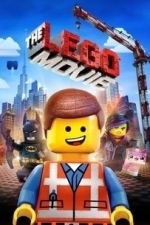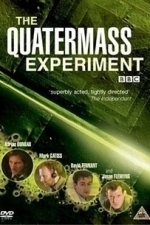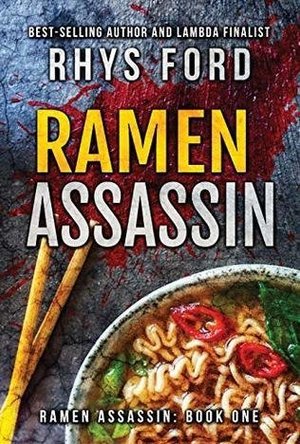Gareth von Kallenbach (980 KP) rated The LEGO Movie (2014) in Movies
Aug 6, 2019
The comforting, self-aware, almost self-deprecating tone that has found its way into the LEGO videogames that have been hitting the markets lately that defines The LEGO Movie. The film takes place in a world made of LEGOs, and the characters all have snap-on/snap-off hair and can merrily disassemble the world around them and build again from the ruins. And while it’s not filmed in stop-motion (which was more disappointing than I thought it would be), the characters have the pleasantly stiff and jerky movement that is the trademark to the style. It’s essentially a film with the rules of a young boy at play, just making it up as things progress.
Even the story felt like it was straight from a children’s book. An average, run-of-the-mill, Joe… well, Emmet (Chris Pratt) falls unsuspectingly into an adventure involving freedom fighters, superheroes, and villains in a very Matrix-esque plot. When he stumbles upon the legendary Piece of Resistance, the only force that can undo the Kragle, a mysterious weapon being used by Lord Business/President Business (Will Ferrell), Emmet begins his journey to fulfill the prophecy and become the best “master builder” in all the world. Along the way he is helped by a plethora of recognizable, and not so recognizable, characters including Batman (Will Arnett), Shaquille O’Neil (Himself), Vitruvious (Morgan Freeman) and Wyldstyle (Elizabeth Banks).
Most children’s films these days, especially in the CGI genre, tend to be lighting fast paced, basically overloading you with unfunny material hoping to distract your from how lame the movie really is. While The LEGO Movie is frantic, it feels like controlled chaos. It has a point. There is a direction where all this weird wild silliness is headed. And while The LEGO Movie would be fine were it just a frantic and clever child’s comedy, it additionally bothers to reach beyond its bounds and address its own artificiality in a plot twist that was way more clever, daring and meaningful than anything seen in most modern adult thrillers. But I don’t want to spoil that for you.
So here it is again, my “Would I buy it” test. Absolutely. The LEGO Movie is great fun and a joyous celebration of the chaos I recall as childhood.
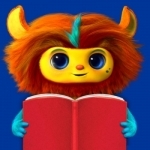
Booksy: Learn to Read Platform for K-2
Education and Book
App
Featured in the New York Times article "Learning to read with tablets"! Booksy is a...
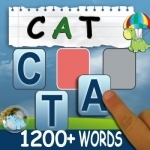
Build A Word Easy Spelling Long&Short Vowels,Sight
Education and Games
App
* "It is clear this app was created by those that understand learning and for those of an...

FC Porto Fantasy Manager 2017 - Your football club
Games and Sports
App
FC Porto Fantasy Manager 2017 - BE THE BOSS: the new edition of the MOST ADDICTING FOOTBALL mobile...

Vehicle Games for little kids! Car Games Toddlers
Games and Education
App
Vroom! Vroom! Do you have a little driver that loves vehicles like cars, fire engines, trucks,...
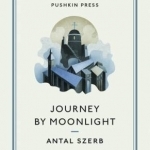
Journey by Moonlight
Antal Szerb, Len Rix and Eoin Ryan
Book
A major classic of 1930s literature, Antal Szerb's Journey by Moonlight (Utas es Holdvilag) is the...
Jesters_folly (230 KP) rated The Quatermass Experiment (2005) in Movies
Sep 14, 2020
As remakes go This one is quite good, it follows the same basic script as the original and the modernisation (mostly) works. The film doesn't go for much in the way of monster effects, relying instead on building atmosphere and tension which helps it keep the feel of the original 1955 version. It also helps that the original writer, Nigel Kneale, was also consulted on this remake.
This version of the film does have a very (modern) British feel to it which is mostly from the fact that is was made by the BBC so has actors that have appeared in other BBC sic Fi shows, most noticeably David Tennant and Mark Gatiss.
I do have a couple of problems with this film though, firstly the main set, used though tout the first half of the film does look to much like a,well film set. The hospital ward, MoD offices and press conference room all appear to be in the same building and, in fact in one scene, the camera pans from one room to the next making the whole thing look as if it was set up in a warehouse or large stage, which it probability was for filming but you shouldn't realy notice that in the finished film.
The other issue was some of the costumes. The film seems to be set in time it was filmed (2007) but some of the costumes don't seem to fit. One reporter looks like a 'teddy boy' whilst one looks like she's from the 20's and there's a scene with 80's/90's looking goths (Yes I know there are still goths but the look has changed a bit through the decades, as with most looks).
I can't quite work out if the remake looses anything from the original, in some ways the threat seems bigger but the ending seems less climatic. The final scene takes place in an art gallery instead of a church but this is due to a slight change in some of the symbology in the film (and probably because the BBC have had complainants when they have blown up churches in the past).
The original had scenes that stuck with me ( I was quite young when i first saw it) and I feel that the remake doesn't have this effect, although that could just be my age now. However the remake does up the tension and it does feel that there is more riding on Quatermass' success
Apart from those points the film is good. Fans of the original will recognise it for what it is but new views won't need any knowledge of the original to watch it.
Debbiereadsbook (1595 KP) rated Ramen Assassin (Ramen Assassin #1) in Books
Jun 28, 2019
When Trey witnesses a dead body being dragged into a van, and then he gets shot at, he never thought the guy who has invaded his dreams would be the one to save him. He makes noodles all day, how can the man possibly pack more fire power than the bad guys, huh? Kuro thought he had left all that behind in the blaze of bullets that followed him to the embassy. But no, here he is, standing over the cute guy who comes in most days, shooting at the bad guys trying to shoot Trey. And then someone shoots at him. And Kuro sees red. Someone has to stand up for Trey, cos his own sister won't!
You never EVER know, from reading a Ford blurb, which way a book will go. You all do it, you read a blurb and your brain goes, Yup, thats what is gonna happen and then you start reading and whatever you had in mind goes right up in smoke!
so, Devastating? check. Emotional? check. Deadly? Murderous? check. Sexy? check, check and check!
I loved Kuro and Trey, both together and seperately. The way their stories mesh together is brilliant. I loved that they had both been eyeing each other up, but neither one wanted to make a move. The fact that Kuro let Trey sit at the back table every time he came in, had not gone unnoticed by his staff. The eyes Trey made at Kuro had not gone unnoticed either.
Trey's history could be any child star in today's world. A rise to fame, from a very young age, and a meteoric fall from grace that left him in everyone's bad books, his family especially. I hated his sister! She was so mean to Trey right when Trey needed her, and when Kuro takes up his case, Kuro gives Trey's sister such a piece of his mind, it's a wonder the woman wasn't reduced a pile of goo!
The whodunnit is a long winded (and long planned out!) and complicated plot, and I loved how it all went down!
This is billed as book one in the Ramen Assassin series. I have no idea whether Kuro and Trey will be the centre of each book, or some of Kuro's associates will be, I don't really care, to be honest! I just wanna read them!
And oh! The food! The food Kuro cooks sounds so yummy! Even when he does what I would call a "cupboard dinner" basically, whatever was in Trey's cupboards and fridge, it was yum! I was drooling, for God's sake! I can only hope Ms Ford does some sort of recipe thing with the book tour, I will have to switch the ramen for rice noodles, but Lord, PULEEEEZE let there be recipes!
I love Rhys Ford, you know I do, and I have so MISSED the way she spins her tales! One sitting read, 200 odd pages, 2.5 hours, and boom! More, I need more!
5 full and shiny stars
**same worded review will appear elsewhere**

Juventus Fantasy Manager 2018
Games and Sports
App
JUVENTUS FANTASY MANAGER 2017-BE THE BOSS: the new edition of the MOST ADDICTING FOOTBALL mobile...

HealthEngine
Health & Fitness and Medical
App
Booking your next health appointment is quick and easy with HealthEngine, Australia’s #1...
